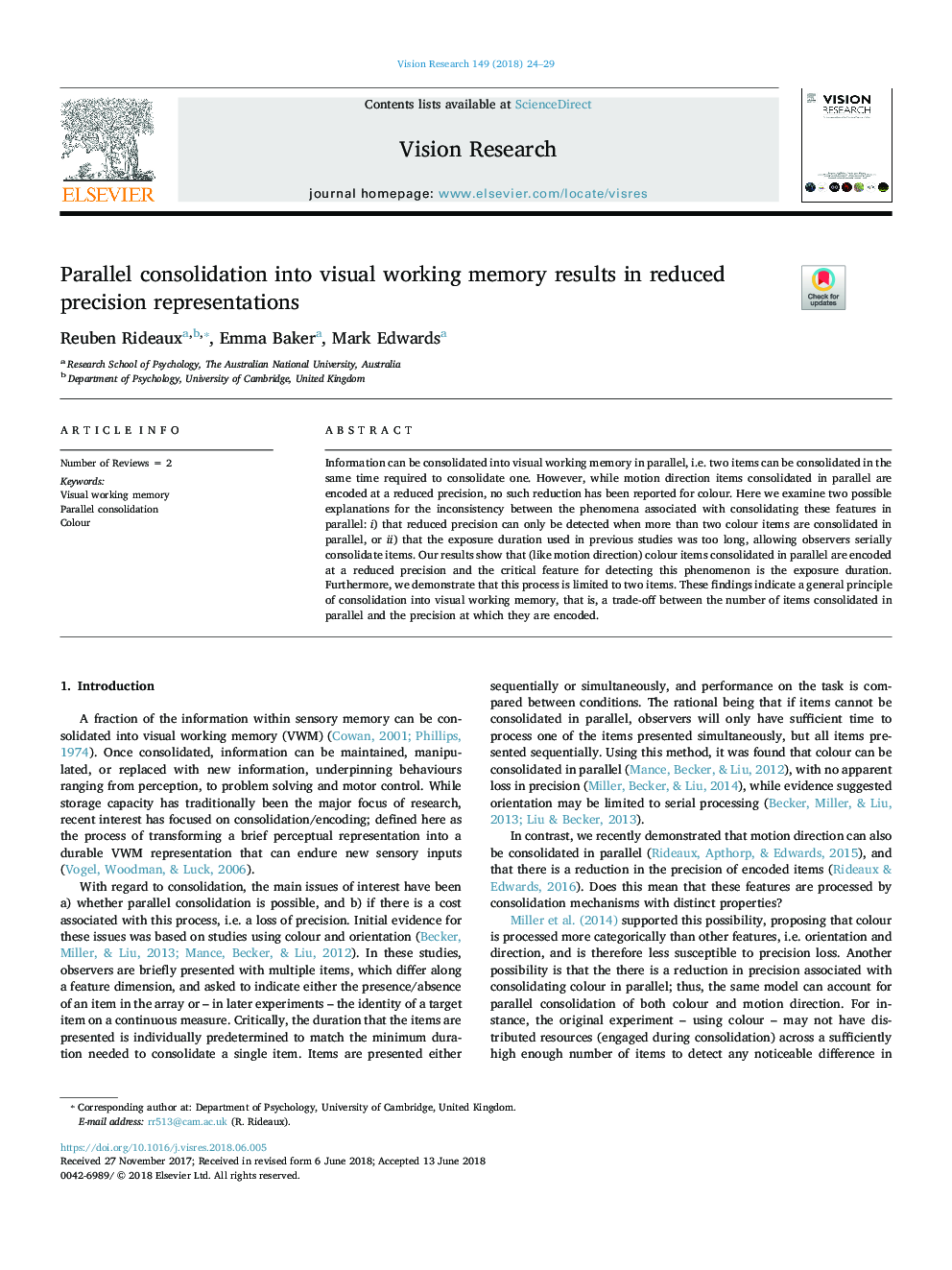| Article ID | Journal | Published Year | Pages | File Type |
|---|---|---|---|---|
| 8795281 | Vision Research | 2018 | 6 Pages |
Abstract
Information can be consolidated into visual working memory in parallel, i.e. two items can be consolidated in the same time required to consolidate one. However, while motion direction items consolidated in parallel are encoded at a reduced precision, no such reduction has been reported for colour. Here we examine two possible explanations for the inconsistency between the phenomena associated with consolidating these features in parallel: i) that reduced precision can only be detected when more than two colour items are consolidated in parallel, or ii) that the exposure duration used in previous studies was too long, allowing observers serially consolidate items. Our results show that (like motion direction) colour items consolidated in parallel are encoded at a reduced precision and the critical feature for detecting this phenomenon is the exposure duration. Furthermore, we demonstrate that this process is limited to two items. These findings indicate a general principle of consolidation into visual working memory, that is, a trade-off between the number of items consolidated in parallel and the precision at which they are encoded.
Keywords
Related Topics
Life Sciences
Neuroscience
Sensory Systems
Authors
Reuben Rideaux, Emma Baker, Mark Edwards,
